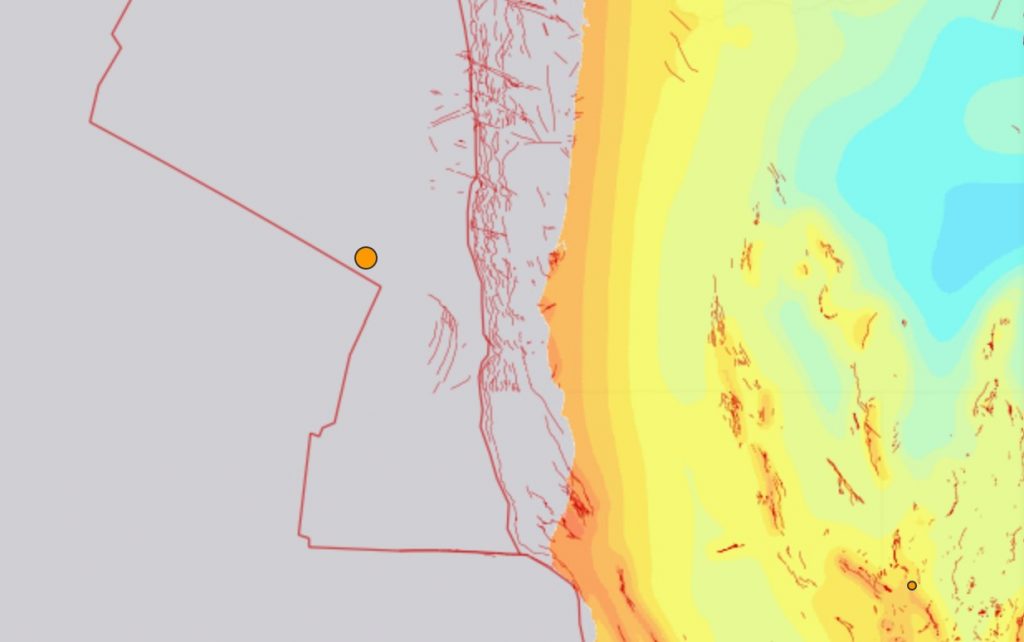The latest earthquake near the Cascadia Subduction Zone occurred on February 8, 2020.
And that tremor should remind us that one of the most ‘terrifying’ disasters in the offing is a Cascadia Subduction Zone earthquake in the Pacific Northwest.
A M4.7 earthquake hit off the Oregon coast on February 8, 2020. Although not very strong, it shoul remind us that an indescribable disaster in the offing is the Cascadia Subduction Zone earthquake, a scenario that involves a M9.0+ earthquake in the Pacific Northwest that would be felt all the way down to Northern California and would shake the earth for three to six minutes.
The Pacific Coast would have perhaps an hour of warning before the tsunami hit. And the devastation would be great.
If it happened tomorrow, there would be perhaps more than 10,000 deaths and 30,000 injuries. Whole cultures of people could be wiped out and the recovery would take decades. The good news? There’s probably ample time to prepare, and that preparation has begun. A similar quake is thought to have occurred in or before January 1700.
Scientists estimate that a recurrence would be due in about 500 to 600 years. But they don’t know for sure. They also don’t know how much seismic slip occurred during that quake in 1700.

“Faults tend to be pretty good at this. They don’t always spend everything they have,” said Brian Atwater of the U.S. Geological Survey Earthquake Hazards Program. There may have been a lot of “breakage” during the last quake or there could be parts of the fault that didn’t break. That would be a way to get “better than 500 years’ worth of slip in 300 years,” Atwater said. Or maybe the earlier quake spent the “whole bank account” and the future event won’t amount to much.
“That’s part of the challenge of trying to present to a public audience scenarios for future earthquakes and their unknowns,” said Atwater. “They don’t happen like clockwork.”
The document Cascadia Rising takes you through the scenario of The Quake. The daytime quake will sneak up on the region’s population, feeling somewhat like a semi-truck passing by.
As the shaking continues, some will forget thei initial training. Some may run, but will make it only a few steps before falling. After about a minute, the shaking will begin to toss people about. Things not anchored will fall. Some people will have gotten under chairs, tables or something they think will protect them. Many will not.
The document says that coastal areas will likely feel it the worst. But down in Oregon and even Northern California, residents will know something is afoot.
One of the big threats during such a quake is liquefaction. Many critical structures stand on silt and sand that become unstable. The grainy soil will begin to act like liquid, and structures — such as bridges, ports, airports and industrial facilities — may shift position or sink.
Local residents will have 20 to 30 minutes to get to high ground and away from the effects of the inevitable tsunami, which will consist of multiple waves over several hours. Some areas will remain flooded even as the tsunami retreats.
There are complete cultures in Washington that could be completely wiped out. “It’s a catastrophic event that will affect a wide swath of our state and Oregon, British Columbia and Northern California,” said Paci-Green. “It is absolutely catastrophic for outer-coast communities, and beyond catastrophic for some of the tribes where a large percentage of their reservation is in the inundation zone.”
The area will be prone to landslides and falling rock. The effect on transportation would be immense as the shaking and tsunami could damage 16,000 miles of highway and 7,000 highway bridges. The resulting economic losses could exceed $80 billion.
But those are estimates. Paci-Green said things could be worse. “The concern among the engineering community is that we don’t have a lot of data on how infrastructure, especially buildings and bridges, responds over that very long period of shaking,” she said. “We don’t know what we don’t know. The other fear is that these events are so far apart, that it’s much harder to get people’s attention and we’re only recently understanding the significance and the potential for a major Cascadia event.”
No comments:
Post a Comment